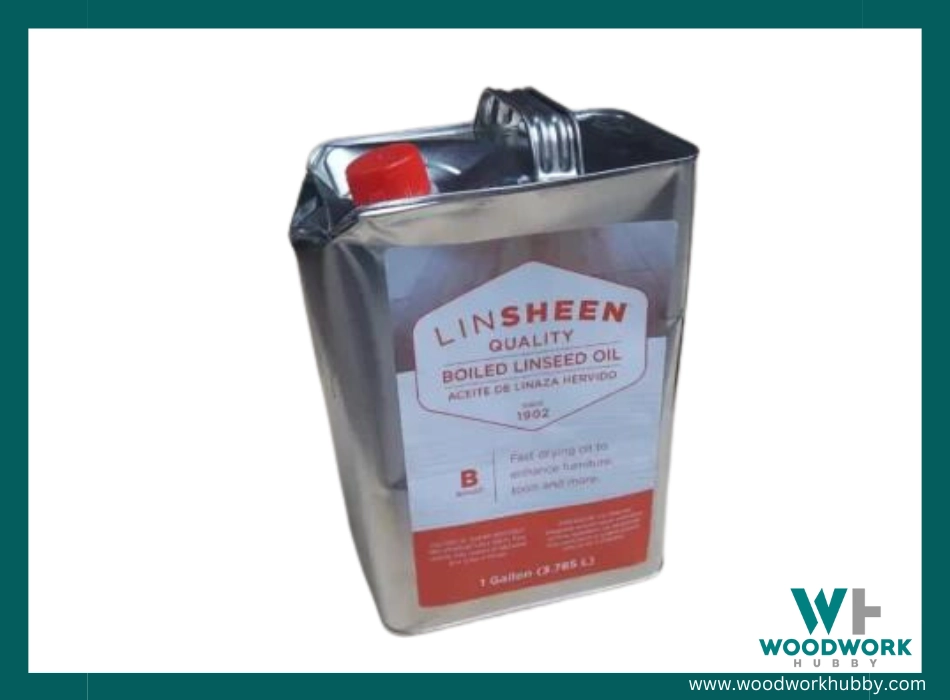Linseed oil is one thing in my workshop that I don’t even remember buying. I bought a few bottles in bulk and have managed to open only one. I was going to open another one because I assumed the one I opened half a year ago would have gone bad. To my surprise, it hadn’t!
Linseed oil does go bad, but not if it is raw and kept away from direct sunlight. It can, theoretically, cure inside the bottle after remaining in it long enough. But since that takes multiple years, it is unlikely that one would witness such an instance of “going bad.”
In most cases, linseed oil goes bad because it isn’t raw or is not stored properly. This article will help you understand how you can keep your bottles of linseed oil from becoming useless and what you can do with the oil you suspect to have already gone bad. Let’s start by exploring the shelf-life of oil, so you have an idea regarding the standing of your bottle.
What Is The Shelf Life For Linseed Oil?

The shelf life of linseed oil is 4 years if it is bottled in its own container, left unaltered, and has enough depth. A single coating’s worth of linseed oil might cure inside the container over a few weeks. But in most cases, linseed oil is usable well past the ‘best by date on its container.
So, if your linseed oil bottle is not 4 years old, then the chances of the oil having gone bad are low unless:
- The bottle has been opened, and the oil smells weird now
- The linseed oil is boiled and is starting to harden
- The oil has an unnatural tint
In the absence of any of those symptoms, the oil is fine even if it is past its ‘best by’ date. The ‘best by’ date is added because it is mandatory for a certain class of products to have a usage term set by the manufacturer.
From my experience, Linseed Oil can last for many years. The oldest I’ve seen is 25 years as seen in this post!
Since the oil falls under this class federally, its manufacturers have to abide by the requirement even though there is no true optimal usage time limit on raw linseed oil.
In my experience, the difference between fresh linseed oil and the oil bottled a long time ago isn’t even noticeable. Of course, this is only when the linseed oil is raw. The addition of other ingredients as well as specific treatments can make the oil go bad within a specific time frame.
Does glue stick to linseed oil? Read my full explanation. You may be surprised!
Does Boiled Linseed Oil Go Bad?
Boiled linseed oil goes bad in the sense that it cannot be properly applied after it starts hardening. This is because the process entails adding drying agents that speed up the hardening of the oil, after which the oil can’t retain its liquid form much longer.
Since boiled linseed oil can cure within 24 hours, I used to wonder why the entire bottle doesn’t become solid overnight.

This led me to research the different factors that affect the linseed curing process, and these are quite relevant to the questions you have:
- Exposure to air matters – In bottled linseed oil (boiled or otherwise), the risk of going bad is lower because the contents’ molecules are not exposed to air. In the boiled oil, the drying agents get activated by exposure to air and heat.
- The depth of the oil matters – Because the drying agents have to be exposed to the elements, the thicker a layer of oil in the bottle, the longer it takes to dry. Bottled oil isn’t in a thin enough layer for the drying agents to get the exposure required for curing.
- Heat matters – While the container takes care of the depth and the air exposure issue, you must take care of the possibility of the oil getting too hot. Boiled oil kept in direct sunlight can go bad in a week.
See My Other Articles On Linseed Oil
Will glue stick to linseed Oil?
Will Epoxy Stick To Linseed Oil?
Will Sticky Linseed Oil Eventually Dry?
What Can I Use If I Don’t Have Linseed Oil?
So, if you have a container of linseed oil, you should make sure there is enough oil in it and that the container is shut properly. Above all, you should keep the bottle in a cold, dark environment. Otherwise, the oil will start to form a blocky texture or start smelling rancid.
Linseed oil is great, but have you thought about Tru oil and Danish oil? Both are great finishes and I explain the difference fully in this article.
What Can You Do With Old Linseed Oil?
You can mainly use old linseed oil as fire fuel in open-air environments or as surface cover for specific types of art projects. Its utility in coating wood to make it scratch-resistant doesn’t extend to when the oil is compromised.

This table explains different possible uses for old oil based on the different definitions of “bad.”
| Symptoms | Use |
|---|---|
| The linseed oil smells bad. | You can use it as fuel for outdoor and open-air fires. |
| The raw oil is starting to harden. | You can mix it with beeswax to make coating wax for smaller surfaces. |
| The oil has a different appearance. | Use it for projects where the tint interference does not matter. |
How To Dispose Of Old Linseed Oil?
In case linseed oil has gone bad beyond reuse capacity, you should avoid disposing of it as regular waste because it can catch fire.
To safely get rid of old linseed oil, you must follow these best practices:
- Do not pour linseed oil down an above-ground P-trap (sink/toilet/shower) – Your sink has a U-shaped turn in its plumbing, which is meant to catch solids. Any oil left in the trap can harden.
- Boiled linseed oil can be disposed of as a solid – Boiled linseed oil isn’t biodegradable but is quick-curing. By pouring thick layers of it on a resilient surface, you can scrape off semi-solid chunks within a day. These can be placed in a container and disposed of safely.
- Raw linseed oil can be disposed of after dilution – If you dilute linseed oil at a 1:5 ratio with five parts oil solvent, it can be poured down the drain.
- Dispose of any type of linseed oil in a hazardous wastebin – If you don’t want to go through the trouble of diluting or solidifying linseed oil, you can take a trip to any gas station and ask the staff to get rid of the bottle for you. Most gas stations have a fire-hazard-waste area.
Can Boiled Linseed Oil Go Rancid?
Boiled Linseed oil can go rancid in the rare instance where it has been in contact with air for a long time but is not shallow enough to dry. In most cases, the oil cures in place before going rancid. Sometimes, the drying agents added to the oil can make it go bad.
If the oil is raw, it is unlikely to go rancid unless stored in direct sunlight in a semi-used container. But if you suspect that a specific bottle contains bad linseed oil, you can refer to the reuse table earlier in the post for ways to avoid wasting the oil.
What Is Bad About Linseed Oil?
Linseed oil has multiple disadvantages, the chief among which is being able to spontaneously catch fire, especially in its liquid state. Even the rags used to apply a linseed oil finish need to be air-dried before disposal.
Video showing the different types of Linseed oil
Final Thoughts – Does Linseed Oil Go Bad?
Linseed oil is pretty self-preserving, especially when it is raw. Even boiled linseed oil lasts well past its ‘best before date if you store it well.
Still, a range of factors from direct sunlight to air exposure can affect the quality of linseed oil. If the oil has a poor tint, weird smell, or altered consistency, you can either reuse it as fire fuel or dispose of it after sufficiently diluting it.




